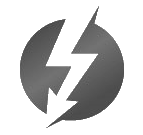27
High Trust ProductsChargers and Power Banks
Headphone & Speakers
Cases & Covers
Virtual Reality
Cables & Adapters
Media Player
Laptop
Tablet
Desktop
Cell Phone
Printers & Copiers
Memory Cards
TV
Computer Display
Game Console
Smart Home
Wearable Technology
Photo & Video Camera
Car Electronics
Car
Networking Equipment
Smart Toys
Home Audio & Video
Professional & Industrial
Storage Drive
Docking Station
Game Console Controllers
Set-top box
Keyboard, Mice, & Stylus
Portable Music Player
Computer Parts & Components
Cordless & Speakerphones
Projector
Software
Reporting
Thunderbolt Gigabit Ethernet Adapter (MD463LLA)
by Apple









Interested in this product?

Select a product category to see which devices type we recommend to use with the Thunderbolt Gigabit Ethernet Adapter (MD463LLA):


Thunderbolt
What is Thunderbolt?
Thunderbolt is a technology developed by Intel that enables consumers to do more with their Windows and Mac based computers. Thunderbolt provides the highest performance data rates available to consumers, enabling you to do faster reads and writes to storage devices, connect to 10G networks, enhance graphics performance by connecting to external graphics cards, and access docks and 4K displays with a wide array of interface port expansion options.
Historically, computer's internal interfaces like PCI Express tended to be faster than external interfaces like USB and DisplayPort. Thunderbolt 1 (10 Gb/s) and Thunderbolt 2 (20 Gb/s) changed this concept by creating a super fast pipe that broke PCI Express out of its confines and into external devices while supporting DisplayPort video over the same Mini DisplayPort connector.
With Thunderbolt 3, Intel took this concept a step further by taking advantage of the new USB Type-C connector and USB Power Delivery technology. Thunderbolt had been the first widely commercially available technology that allowed multiple interfaces to be carried over a single connector but the USB community took this concept to the next level with the USB Type-C connector and Power Delivery. Thunderbolt 3 now uses the same USB Type-C connector and the USB Power Delivery standard instead of the previous Mini DisplayPort connector and Thunderbolt power scheme found in Thunderbolt 1 and Thunderbolt 2.
Most importantly for users and product developers, you no longer have to worry about which devices and connectors are USB vs Thunderbolt. Thunderbolt 3 now supports USB 3.1 Gen 2 (10 Gb/s) which means that you can plug in any of the billions of USB 3.1 Gen 2 (10 Gb/s), USB 3.1 Gen 1 (5 Gb/s), USB 2.0 high speed (480 Mb/s), full speed (12 Mb/s) and low speed (1.5 Mb/s) devices shipped out every year.
Where can Thunderbolt be found?
Thunderbolt 1 and 2 products were found mostly on Apple Mac platforms as well as some higher end Windows workstations and PC's. Apple Mac's were the first to take advantage of Thunderbolt's capabilities and had better integration of Thunderbolt into Mac OS X compared to Microsoft Windows. Not surprisingly, Thunderbolt 1 and 2 peripherals were mostly sold by brands loyal to Apple and commercial products sold into the film and video production and editing industry where Mac's are popular with artistic professionals.
Thunderbolt 3 exploded onto the scene through quick adoption from most Windows PC makers into a variety of consumer, commercial, and gaming PC's as well as workstations. Even though Apple was one of the first to ship a USB Type-C notebook with the MacBook (Early 2015), Apple has not yet announced a product supporting Thunderbolt 3 as of June 2016. While most peripheral companies that supported Thunderbolt 1 and 2, have also announced Thunderbolt 3 products, widespread Thunderbolt 3 adoption by Windows PC's is expected to attract more brands and developers to launch Thunderbolt products.
Who and what applications can best to take advantage of Thunderbolt?
Most professionals managing a lot of video and audio editing have already integrated Thunderbolt 1 and 2 into their workflow and depend on Thunderbolt to get their jobs done efficiently. However, ordinary consumers can take advantage of the power of Thunderbolt in their every day lives.
If you are a photography buff or have collected tons of pictures and videos of your family, your media collection can grow to many gigabytes or even get to the terabytes level. Those using USB know how long it can take to move large media file folders, but once you use Thunderbolt and experience the fast transfer speeds, you try to make use of a Thunderbolt connection anytime you can.
Thunderbolt is also great for doing large backups for HiRes and iTune audio collections, Microsoft PowerPoint presentations, and other work documents. Time Machine backups and recovery integrates well with Thunderbolt on Mac's.
With Thunderbolt 3, you can also take advantage of plugging in your slim Thunderbolt notebook to an external graphics dock to get even higher graphics performance than what's available from the notebook's own internal graphics processor. This allows you to keep a lightweight portable notebook while on the road, but still enjoy graphics intensive games and commercial design and simulation applications while at your desk.
Need to charge your USB Type-C devices quickly? By using the USB Power Delivery protocol, Thunderbolt 3 ports guarantee that 15 watts of power is delivered to any smartphone, tablet, or any other device that supports rapid charging through USB Power Delivery.
For professionals or serious gamers needing access to simultaneous dual 4K@60hz displays, Thunderbolt 3 has anough bandwidth to support both as long as the internal graphics processor in the computer can support dual 4K@60hz displays as well.
Thunderbolt is also ideal if your workflow requires you to access many different interfaces and types of peripherals. Thunderbolt has a fat enough pipe and flexibility to connect you with just about any other interface out there as well as daisy chain multiple external peripherals to support any sort of workflow.
View Full Article
Featured Products
 GTrusted
GTrusted



























